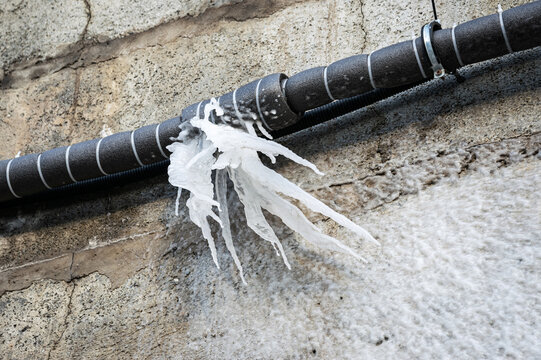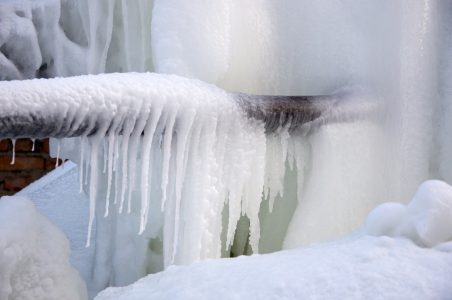Protecting Against Frozen Pipes: Best Tips for Winter
Protecting Against Frozen Pipes: Best Tips for Winter
Blog Article
They are making a number of great annotation on How to Prevent Your Pipes From Freezing overall in this content following next.

Winter can damage your plumbing, especially by freezing pipes. Here's just how to stop it from happening and what to do if it does.
Intro
As temperature levels decrease, the risk of icy pipelines boosts, potentially bring about pricey repair work and water damage. Understanding just how to avoid frozen pipelines is essential for homeowners in chilly climates.
Recognizing Frozen Pipes
What triggers pipes to ice up?
Pipelines freeze when revealed to temperatures listed below 32 ° F (0 ° C) for extended durations. As water inside the pipelines freezes, it broadens, putting pressure on the pipe wall surfaces and potentially creating them to rupture.
Threats and damages
Frozen pipelines can result in supply of water disturbances, home damages, and expensive fixings. Ruptured pipes can flood homes and create substantial structural damages.
Signs of Frozen Water Lines
Recognizing frozen pipelines early can stop them from bursting.
Exactly how to recognize frozen pipes
Try to find lowered water flow from faucets, unusual odors or sounds from pipelines, and noticeable frost on revealed pipes.
Avoidance Tips
Insulating susceptible pipes
Wrap pipes in insulation sleeves or utilize warm tape to secure them from freezing temperature levels. Concentrate on pipelines in unheated or outside areas of the home.
Heating techniques
Maintain interior spaces properly warmed, particularly areas with pipes. Open closet doors to enable cozy air to flow around pipes under sinks.
Protecting Outside Plumbing
Yard hoses and outside taps
Detach and drain pipes garden pipes prior to winter months. Install frost-proof faucets or cover exterior taps with protected caps.
What to Do If Your Pipelines Freeze
Immediate activities to take
If you think icy pipelines, keep faucets open to soothe pressure as the ice melts. Use a hairdryer or towels taken in hot water to thaw pipes gradually.
Long-Term Solutions
Structural changes
Think about rerouting pipelines far from outside walls or unheated locations. Add added insulation to attics, cellars, and crawl spaces.
Upgrading insulation
Purchase top quality insulation for pipes, attic rooms, and walls. Appropriate insulation aids maintain constant temperature levels and reduces the danger of icy pipelines.
Final thought
Protecting against icy pipes requires positive steps and quick feedbacks. By recognizing the causes, signs, and safety nets, house owners can safeguard their plumbing throughout cold weather.
5 Ways to Prevent Frozen Pipes
Drain Outdoor Faucets and Disconnect Hoses
First, close the shut-off valve that controls the flow of water in the pipe to your outdoor faucet. Then, head outside to disconnect and drain your hose and open the outdoor faucet to allow the water to completely drain out of the line. Turn off the faucet when done. Finally, head back to the shut-off valve and drain the remaining water inside the pipe into a bucket or container. Additionally, if you have a home irrigation system, you should consider hiring an expert to clear the system of water each year.
Insulate Pipes
One of the best and most cost-effective methods for preventing frozen water pipes is to wrap your pipes with insulation. This is especially important for areas in your home that aren’t exposed to heat, such as an attic. We suggest using foam sleeves, which can typically be found at your local hardware store.
Keep Heat Running at 65
Your pipes are located inside your walls, and the temperature there is much colder than the rest of the house. To prevent your pipes from freezing, The Insurance Information Institute suggests that you keep your home heated to at least 65 degrees, even when traveling. You may want to invest in smart devices that can keep an eye on the temperature in your home while you’re away.
Leave Water Dripping
Moving water — even a small trickle — can prevent ice from forming inside your pipes. When freezing temps are imminent, start a drip of water from all faucets that serve exposed pipes. Leaving a few faucets running will also help relieve pressure inside the pipes and help prevent a rupture if the water inside freezes.
Open Cupboard Doors
Warm your kitchen and bathroom pipes by opening cupboards and vanities. You should also leave your interior doors ajar to help warm air circulate evenly throughout your home.

I'm certainly very occupied with How To Avoid Freezing Pipes and I really hope you enjoyed reading the blog posting. Do you know someone else who is interested in the subject? Be sure share it. Thank-you for your time spent reading it.
Order Repair Report this page